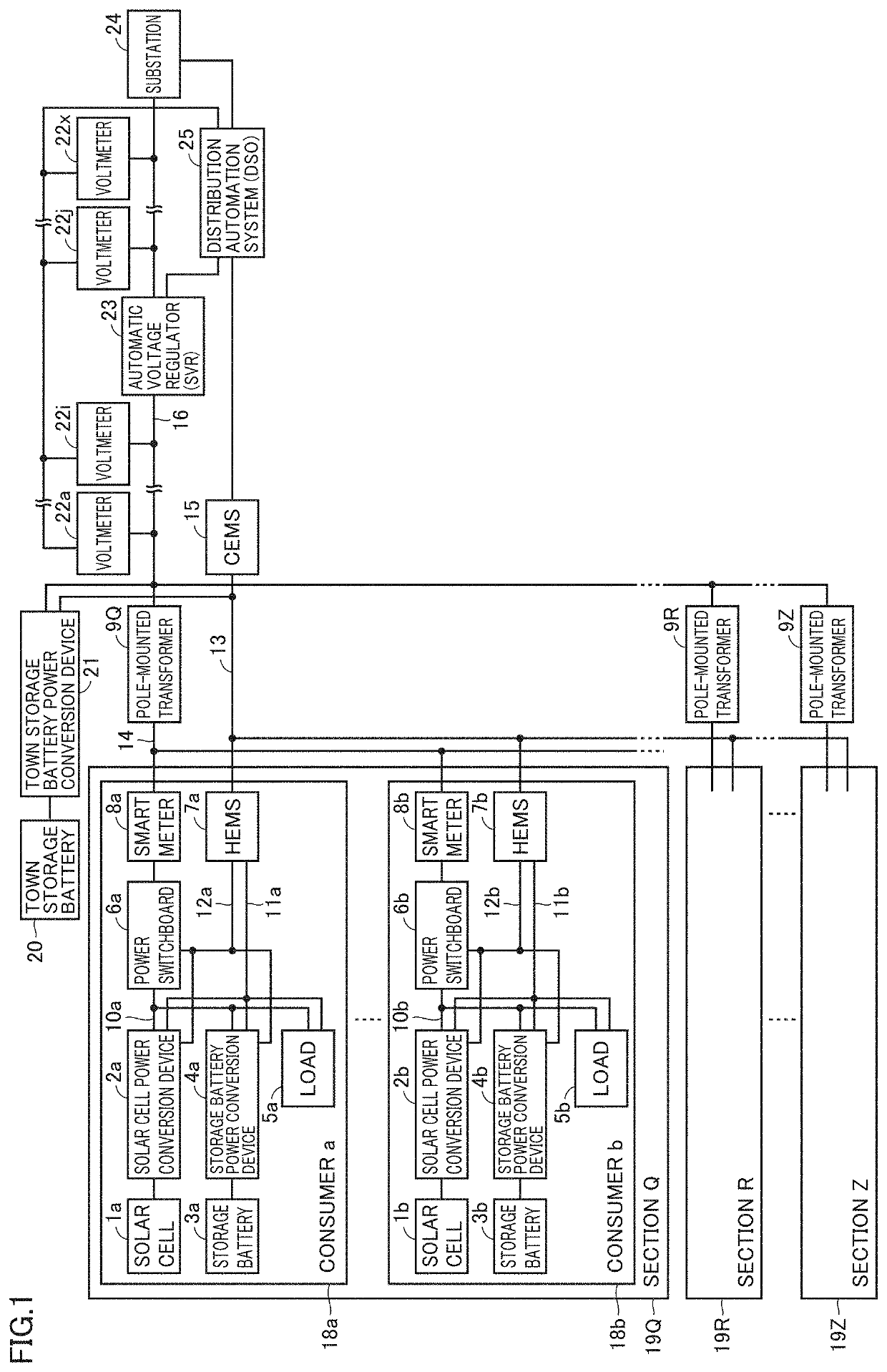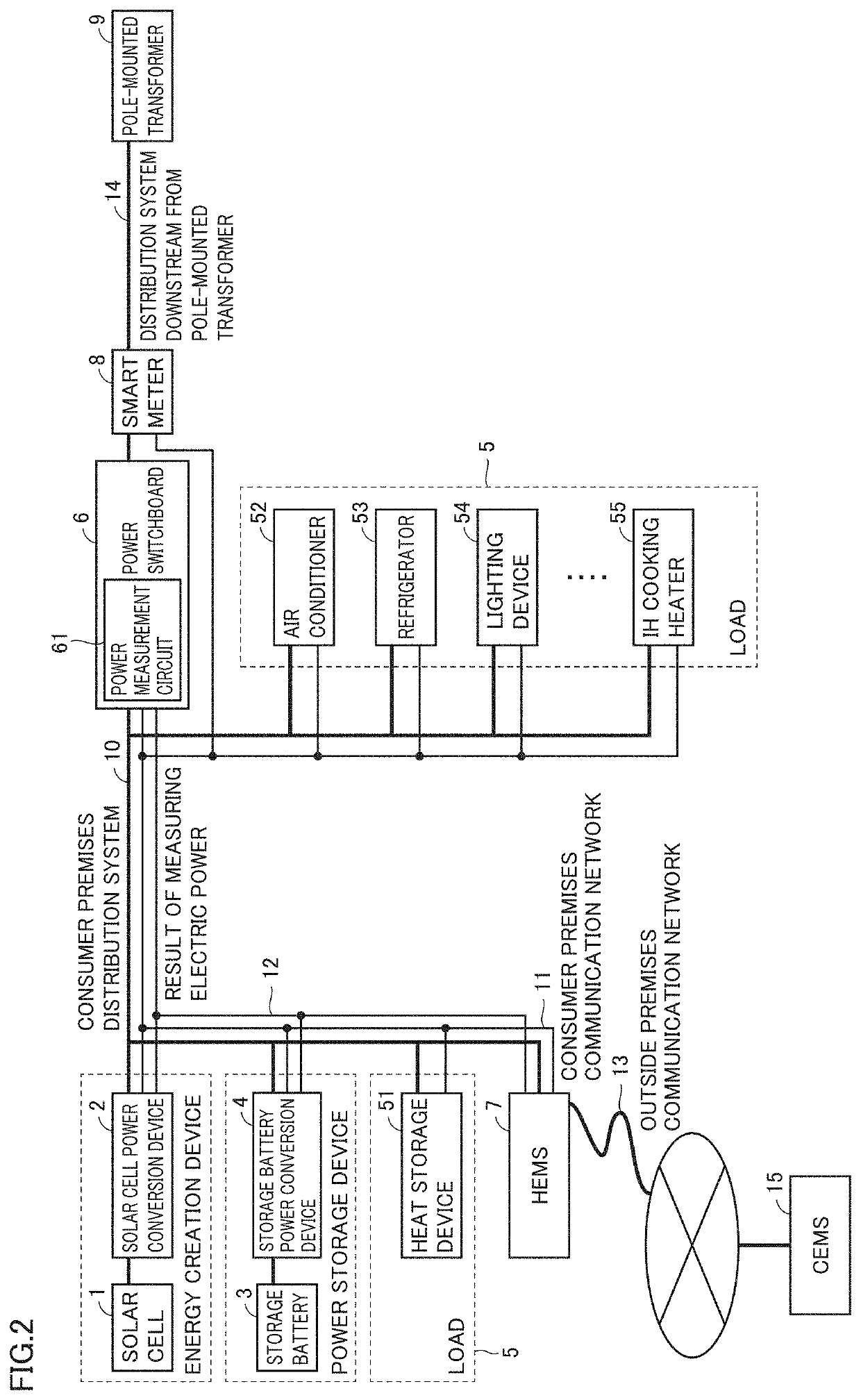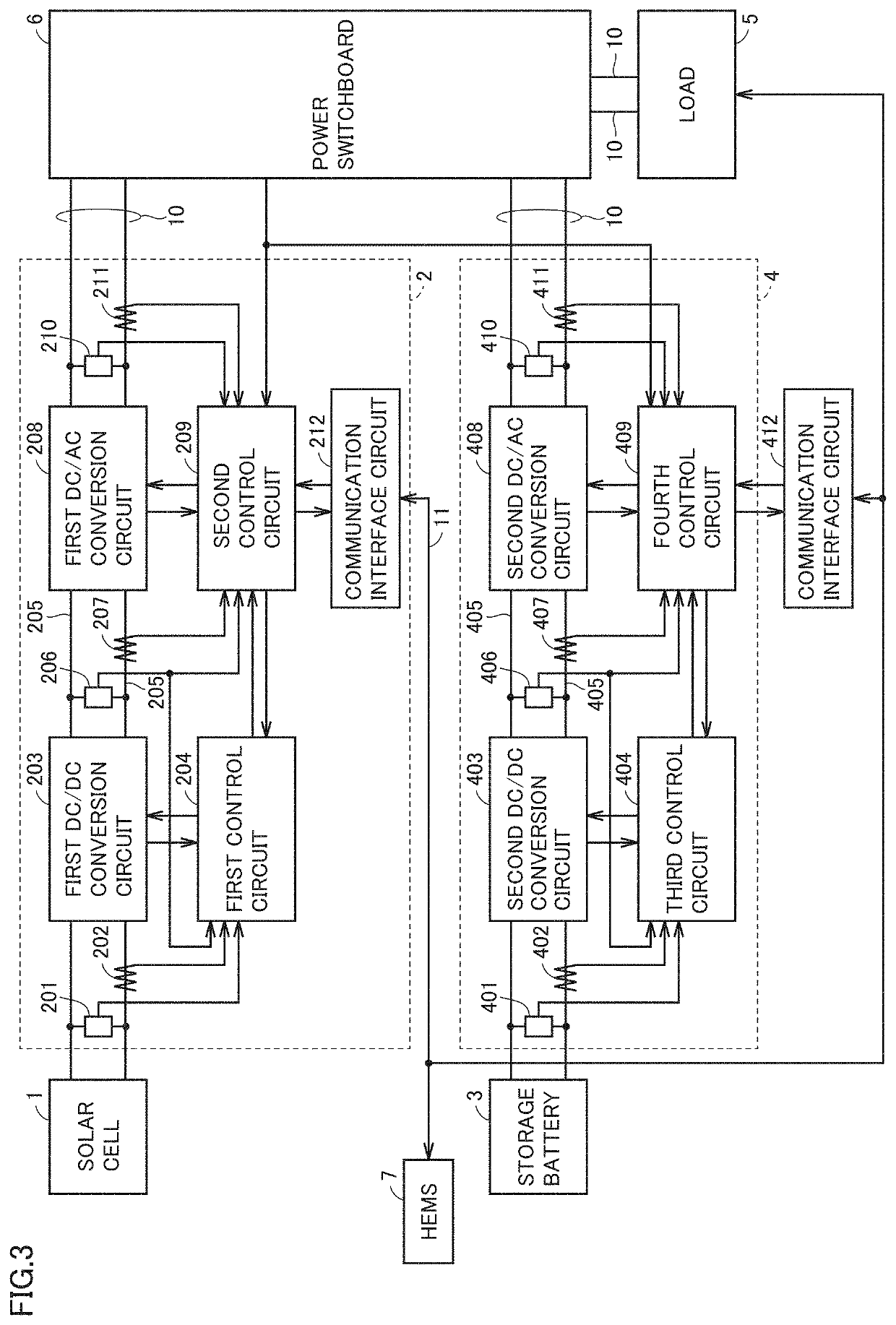Power conversion device
- Summary
- Abstract
- Description
- Claims
- Application Information
AI Technical Summary
Benefits of technology
Problems solved by technology
Method used
Image
Examples
first embodiment
[0045]FIG. 1 is a block diagram showing a configuration of a distributed power supply system to which a power conversion device according to the first embodiment of the present invention is applied.
[0046]Referring to FIG. 1, the distributed power supply system is disposed in a smart town formed of a collection of a plurality of sections (for example, about 30 sections). Each of the sections forming such a smart town is constituted of a plurality of (for example, about ten) consumers connected to a common pole-mounted transformer. FIG. 1 shows sections 19Q, 19R and 19Z, and pole-mounted transformers 9Q, 9R and 9Z that correspond to sections 19Q, 19R and 19Z, respectively, but any number of sections may be provided. Furthermore, a consumer a and a consumer b are shown in section 19Q, but any number of consumers may exist.
[0047]Each consumer house 18 includes a solar cell 1, a solar cell power conversion device 2, a storage battery 3, a storage battery power conversion device 4, a load...
second embodiment
[0265]The first embodiment has been described with regard to an example in which the dead zone information width notified to solar cell power conversion device 2 is processed by HEMS 7 into two types and the dead zone width information notified to storage battery power conversion device 4 is also processed by HEMS 7, with the result that a total of three different types of dead zone width information is notified from the HEMS to the power conversion device.
[0266]In the second embodiment, the dead zone width information is not processed as in the first embodiment. Also, the target voltage of the system voltage (consumer premises distribution system 10) at the time of system voltage stabilization control and the end determination voltage for the system voltage stabilization control by reactive power output are differently calculated. In addition, as to the control configuration, the second embodiment is different from the first embodiment in the configurations of voltage control targe...
third embodiment
[0289]The third embodiment will be described with regard to the case where, in contrast to the first embodiment, HEMS 7 generates one type of dead zone information width to be notified to solar cell power conversion device 2 and also generates two types of dead zone width information to be notified to storage battery power conversion device 4, thereby obtaining a total of three different types of dead zone width information, which is then notified to each power conversion device.
[0290]FIG. 31 is a conceptual diagram illustrating the dead zone width information, the target voltage at the time of system voltage stabilization control, and the end determination voltage for system voltage stabilization control by reactive power output in the third embodiment.
[0291]Referring to FIG. 31, in the third embodiment, HEMS 7 sets two types of dead zone widths of storage battery power conversion device 4 in accordance with the comparison between the electric power generated by solar cell 1 and th...
PUM
 Login to View More
Login to View More Abstract
Description
Claims
Application Information
 Login to View More
Login to View More - R&D
- Intellectual Property
- Life Sciences
- Materials
- Tech Scout
- Unparalleled Data Quality
- Higher Quality Content
- 60% Fewer Hallucinations
Browse by: Latest US Patents, China's latest patents, Technical Efficacy Thesaurus, Application Domain, Technology Topic, Popular Technical Reports.
© 2025 PatSnap. All rights reserved.Legal|Privacy policy|Modern Slavery Act Transparency Statement|Sitemap|About US| Contact US: help@patsnap.com



